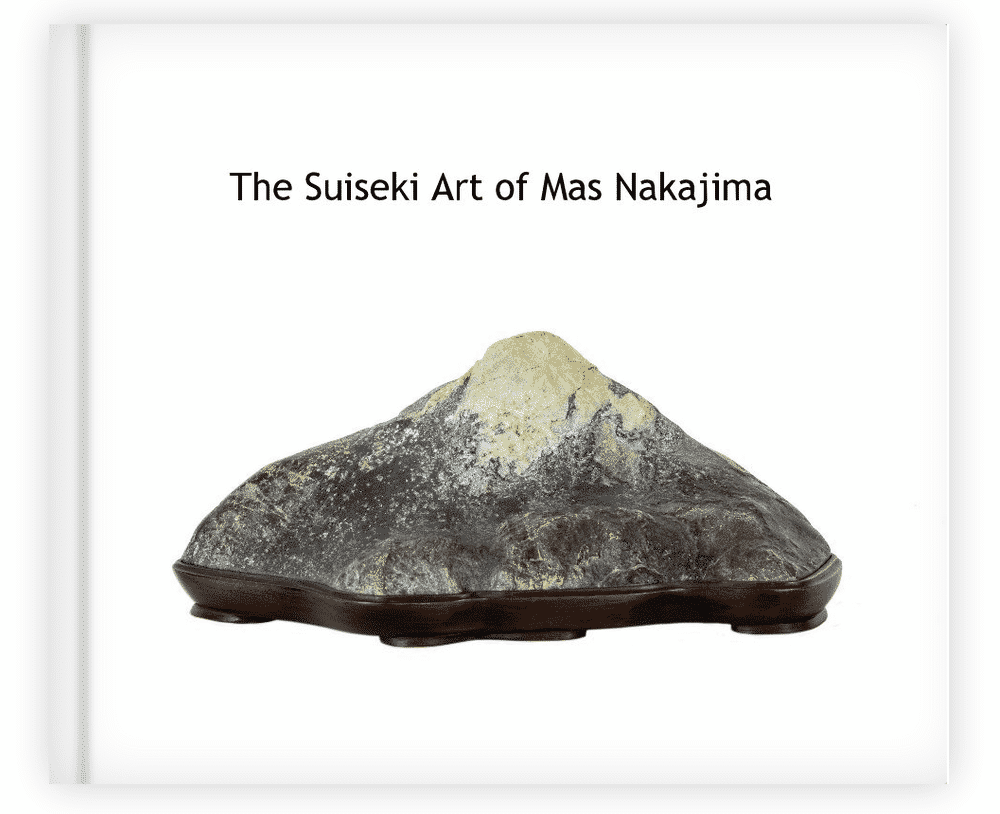I always look forward to repotting trees that haven’t been repotted in a while. It’s a great opportunity to make improvements to the surface roots and I can change the look of the tree by selecting a new container.
Although the focus of this post will be on container selection, here are some details about the root-work.
Because many years had passed since the tree was last repotted, some roots had grown above the lip of the pot. The first step is to remove these roots to reveal the base of the trunk.
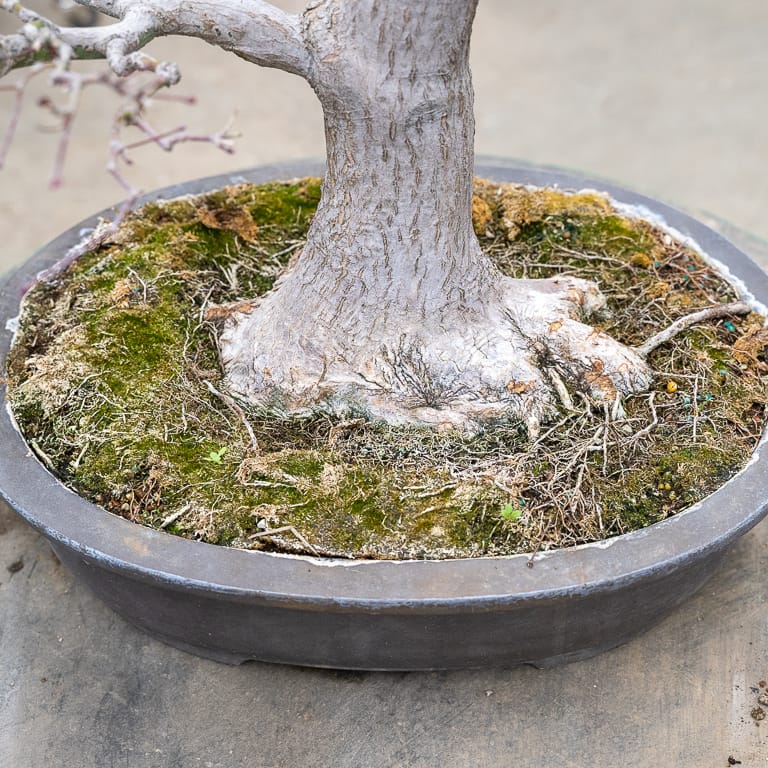
Root build-up
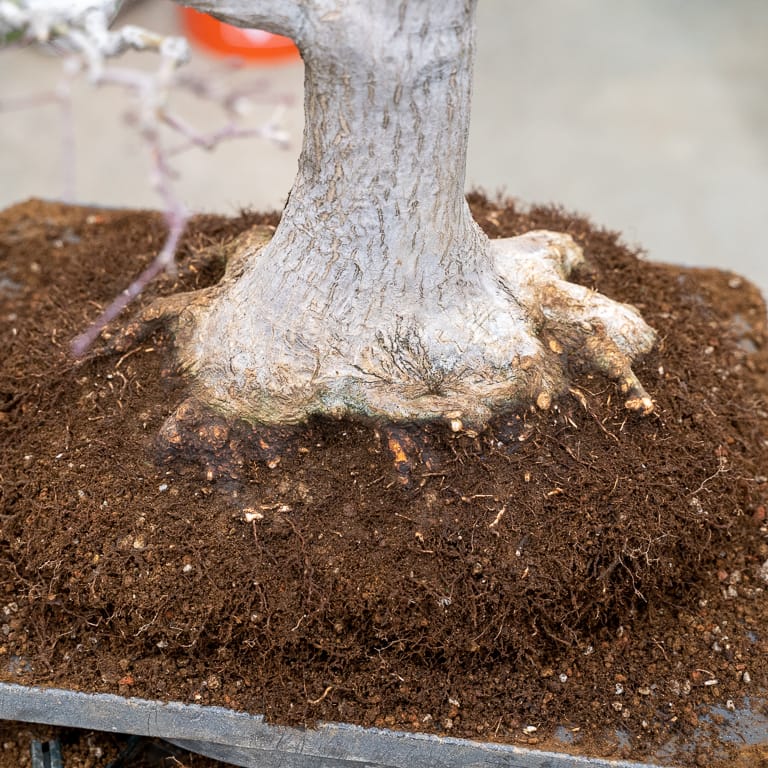
After revealing the base of the trunk
Here’s the tree after basic root-work.
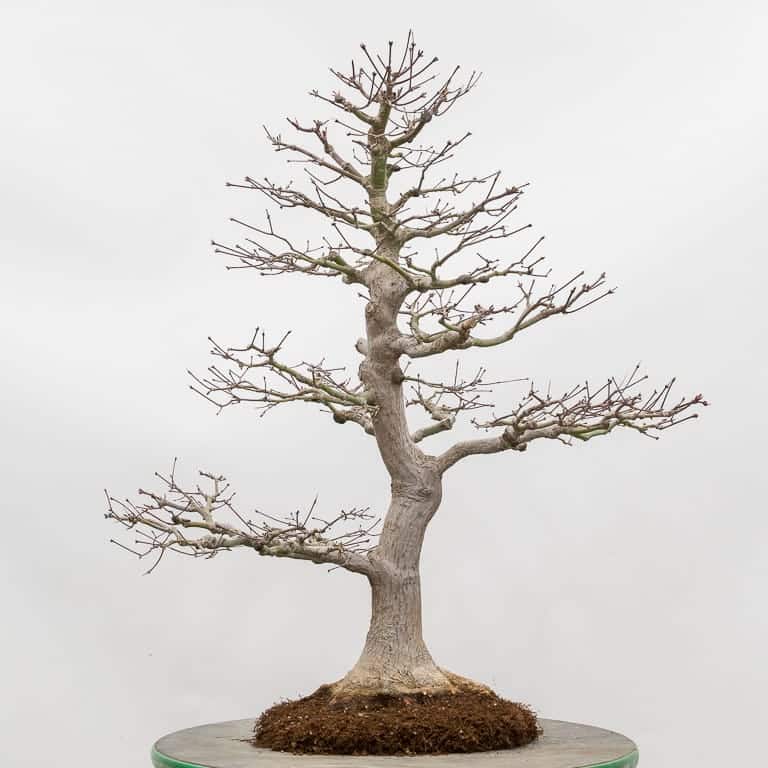
Japanese maple
On the bottom of the root ball, I removed the soil in middle to check for old soil. The soil was good right up to the base of the trunk.
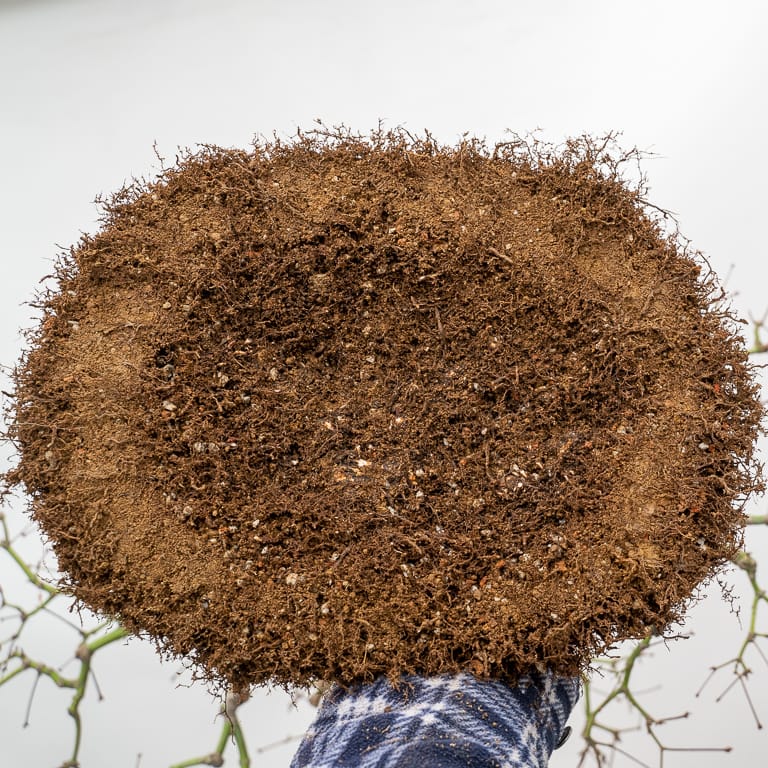
Concave root ball
Because I don’t want air pockets below the trunk, I perforated the root ball which will let me fill in this area from above. I used chopsticks to mark the openings into which I will add new soil.
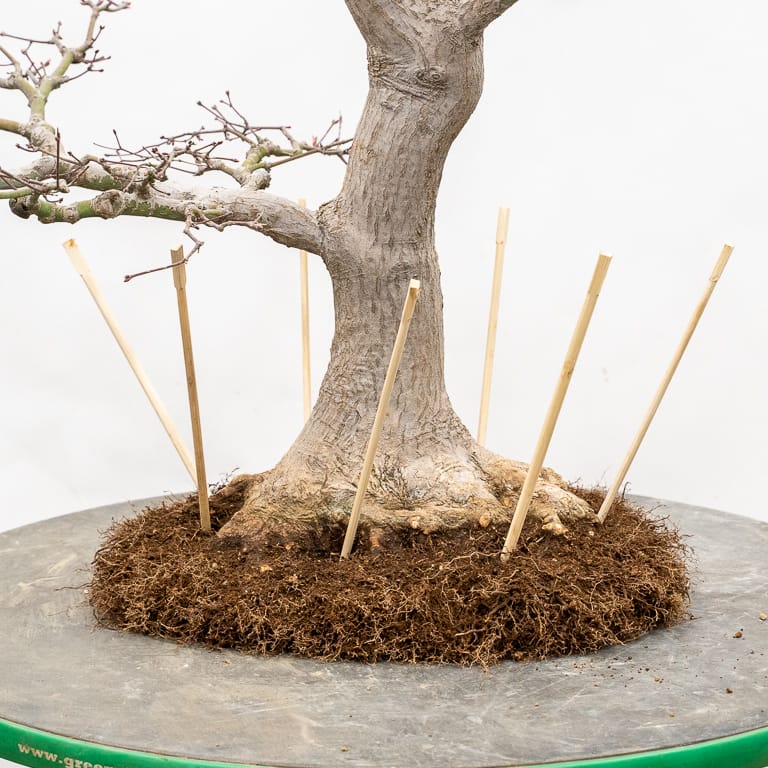
Chopsticks marking perforations in the root ball
Next, it was time to select a new container for the tree.
I’ve included the external dimensions of the pots to suggest the effect small differences in size can make. The tree, for reference, is 31″ tall, 28″ wide, and 26″ deep. The surface roots are 8.5″ wide at the soil-line and the trunk is 2.5″ wide half-way between the soil and the first branch.
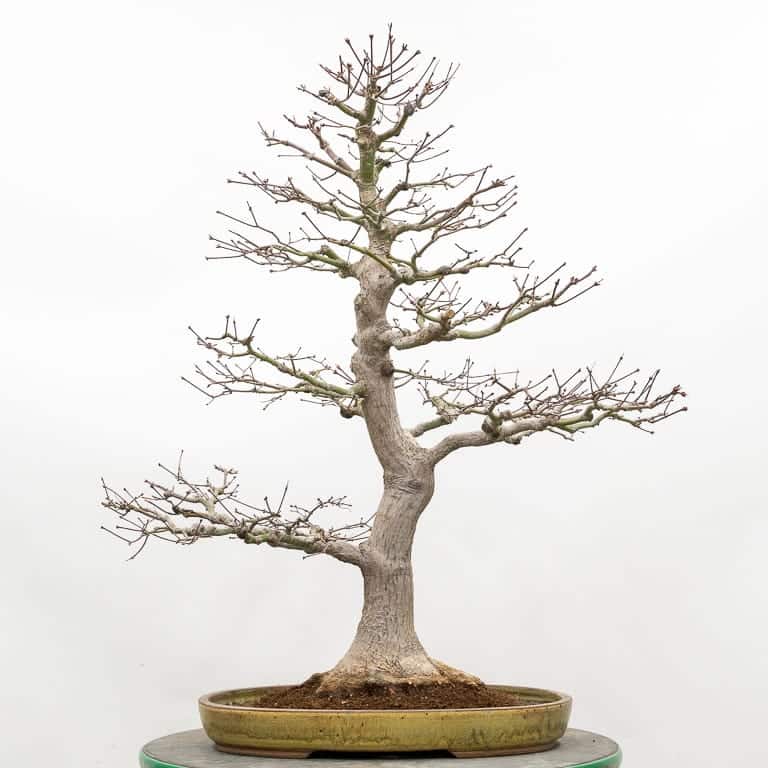
#1 – Sara Rayner: 18″ wide, 2-3/8″ deep
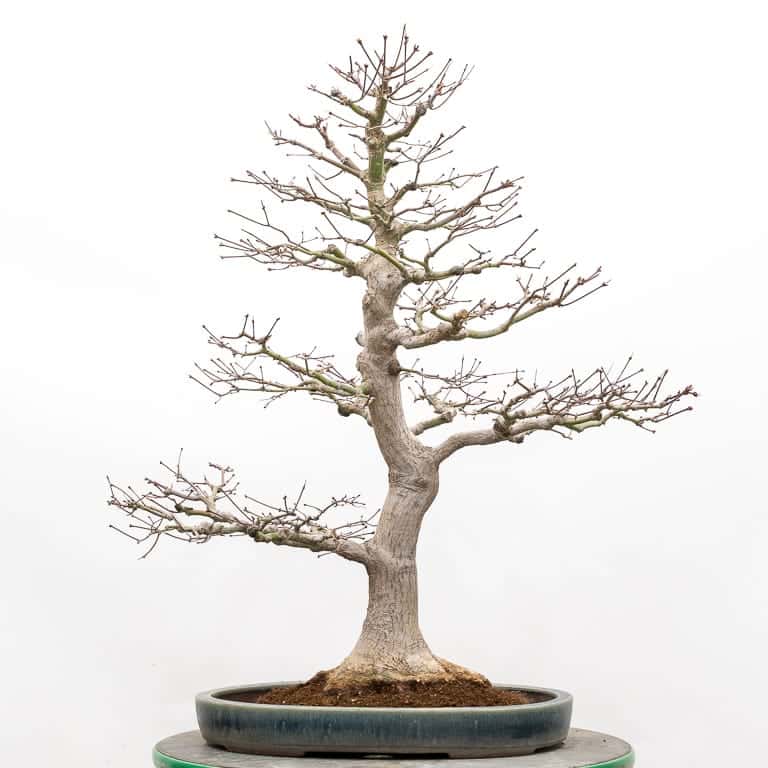
#2 – Suishoen: 18 1/4″ wide, 2 3/8″ deep
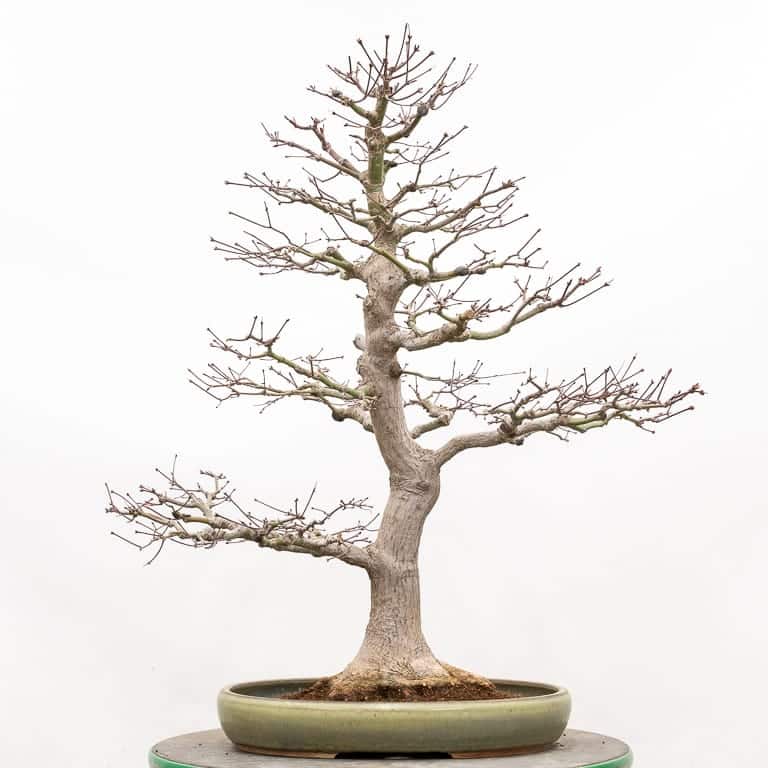
#3 – Sara Rayner: 17 1/4″ wide, 2 3/4″ deep
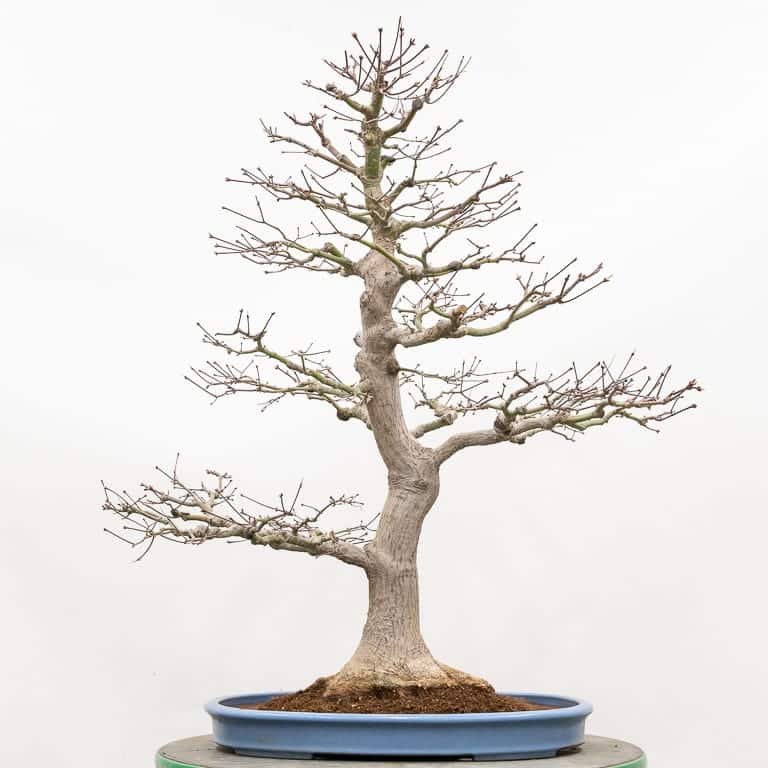
#4 – Yamafusa: 18 1/2″ wide, 2 3/16″ deep
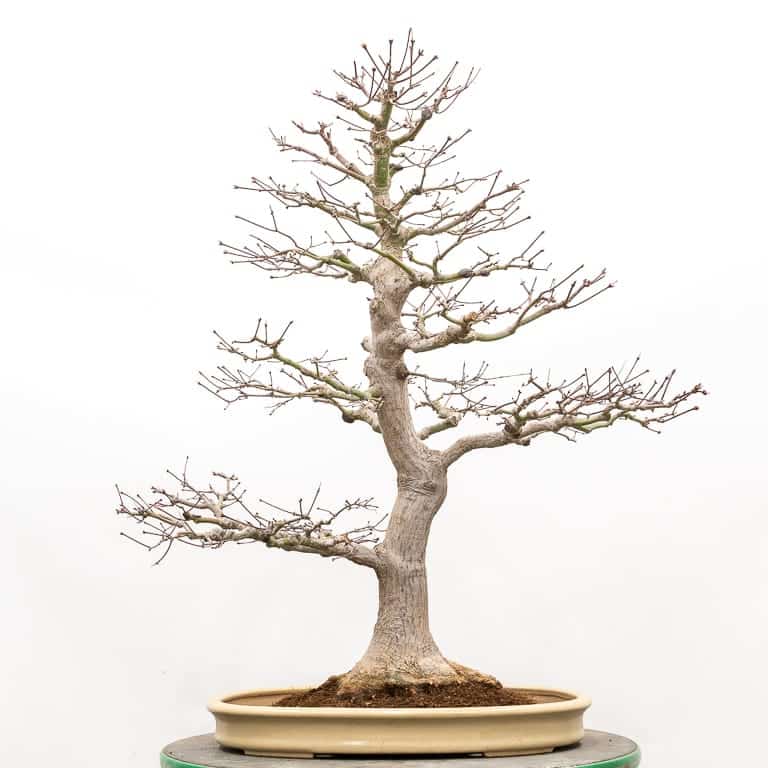
#5 – Reiho: 18 5/8″ wide, 2 3/8″ deep
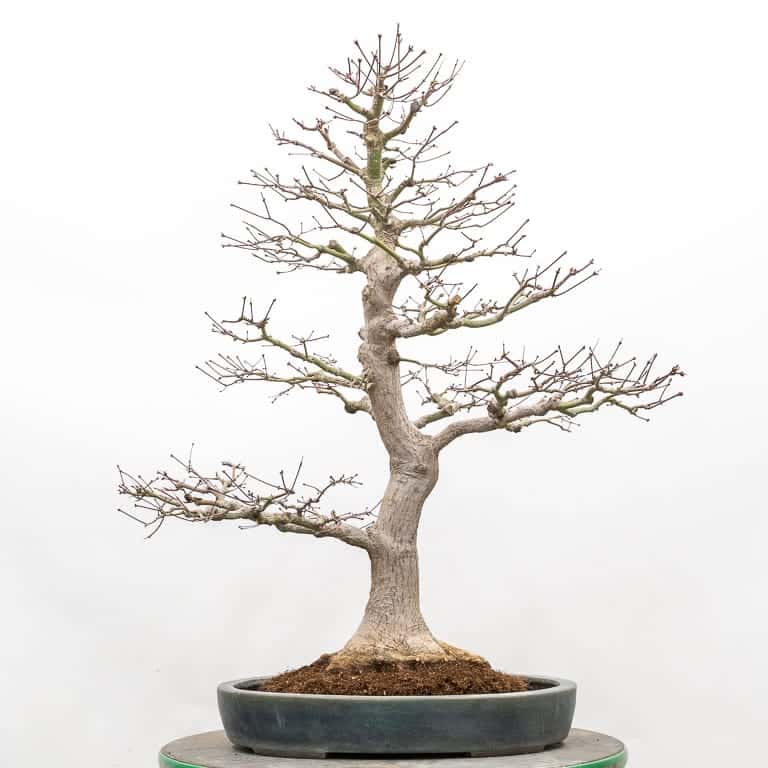
#6 – Yamaaki: 18″ wide, 3″ deep
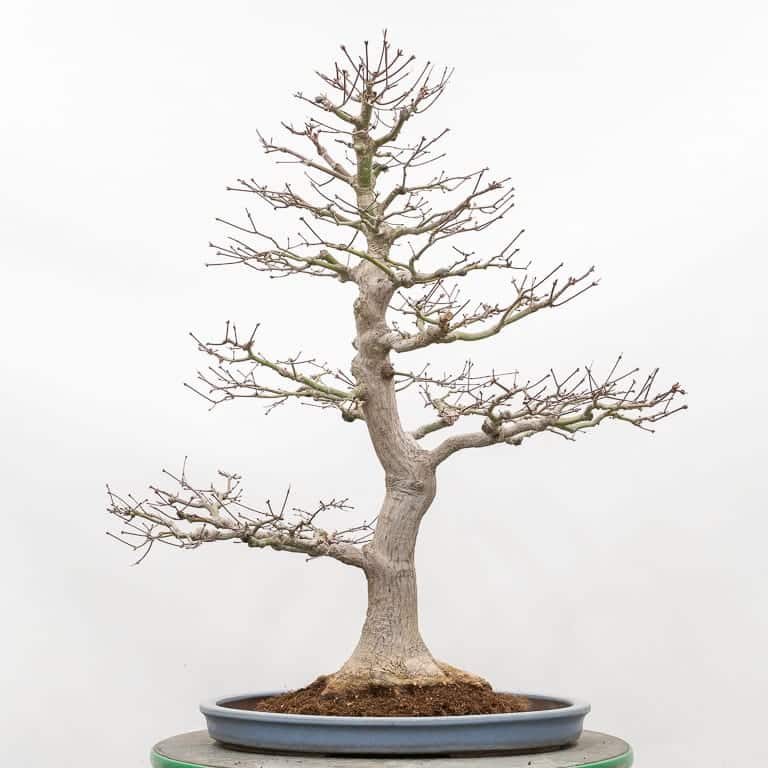
#7 – Yamaaki: 19″ wide, 2 1/16″ deep
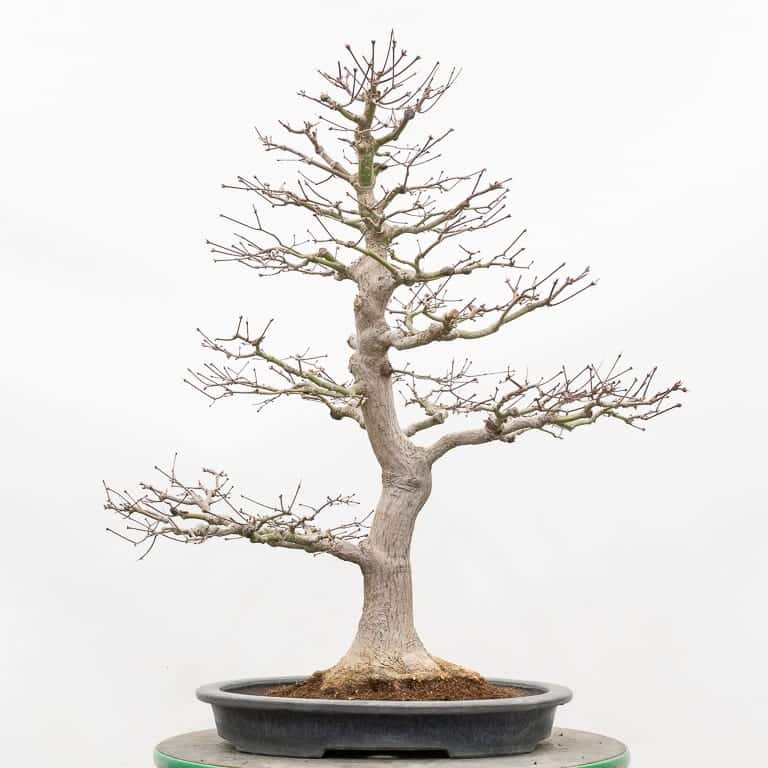
#8 – Suishoen: 18 1/2″ wide, 2 3/4″ deep
I liked different things about each of the options. The darker blues look great against the light-colored bark, and the light blues will look good with pale green foliage in spring. The two yellow pots will look good year-round.
For me, the biggest difference in feeling resulted from the container dimensions and the shape of the pot lip.
In the end, I selected a pot for its size: the relatively deep Yamaaki.
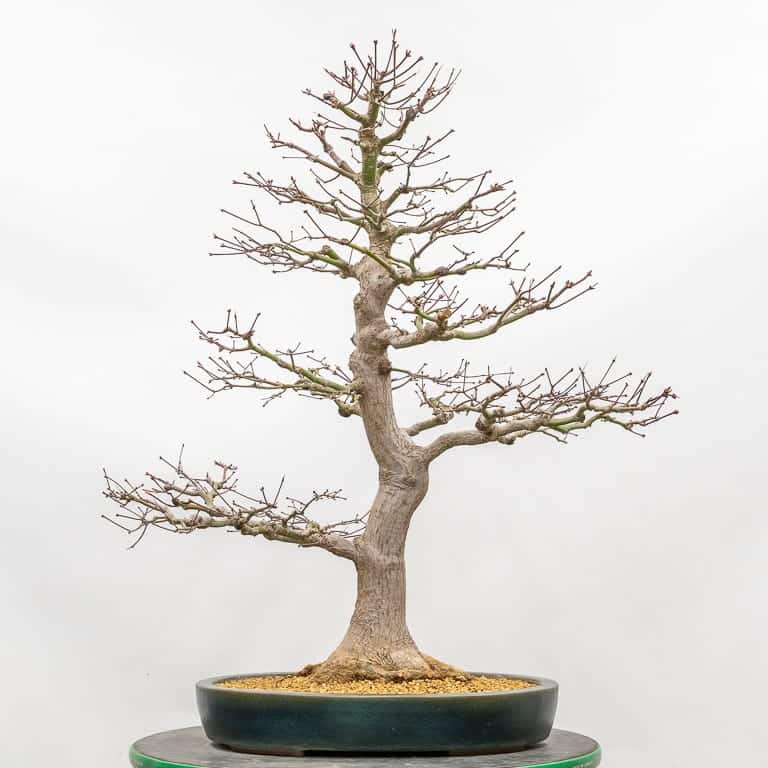
Repotting complete – pot #6
I’d like to use a shallow pot in the future, but for now I want to increase root development at the base of the trunk. By using a deeper pot, I can bury the base of the roots while encouraging lateral root development.
Depending on how the tree grows in this pot, I’ll look to use a shallower container the next time I repot.
New Book: The Suiseki Art of Mas Nakajima
Sam Edge and Janet Roth have created a tribute to the suiseki art of Mas Nakajima in a hard-cover book featuring 63 of Nakajima’s best-known stones.
The 11″ by 13″ book is 102 pages and includes remembrances from friends, family, and students. The beautiful photography and clean layout by Sam Edge makes the book a beautiful reference of Nakajima’s work.
Learn more about Nakajima at the Suiseki Art website. You can browse a preview of the book at The Suiseki Art of Mas Nakajima.

